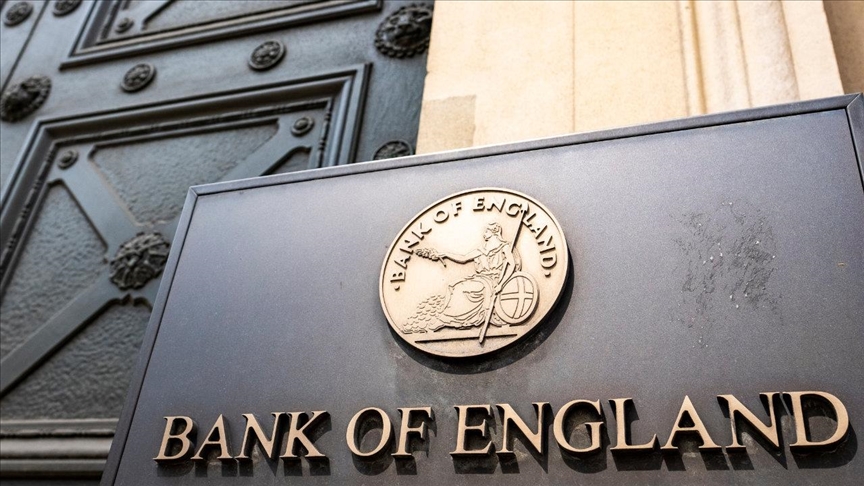Weekly Market Analysis by Manokaran Mottain
CURRENCY
The Ringgit continued its slide against the US Dollar as foreign portfolio managers in both the fixed income and equity space continue to adjust and rebalance their portfolios in light of the continued interest rate hikes by the US Federal Reserve.
Current market expectations is for the US Federal Reserve to raise the FFR by another 75 basis points at the next US FOMC Meeting on 1-2 November 2022 followed by a smaller 50 basis points hike at its last FOMC meeting for the year on 13-14 December 2022. The local currency continues to set new lows against the greenback and ended the week at RM4.6350 / USD1.00 (+5.8sen).
Going forward, I will expect further weakness to the Ringgit in the coming weeks in the run up to the next FOMC meeting and adjust my expected trading band for the Ringgit in the near term to between RM4.60 to RM4.70.

Meanwhile, the British Pound plummeted sharply against all major currencies after the British Government unveiled its mini budget last Friday, which involves the biggest series of tax cuts in the past 50 years that amounts to around 45 billion pounds to boost their economy.
However, the plan drew considerable criticism from various parties including the International Monetary Fund (IMF) and prominent economists due to its plan to fund the massive revenue shortfall arising from the tax cuts with borrowings.
The IMF urged the British Government to re-evaluate the mini budget proposals as its inflationary nature could potentially lead to serious negative economic consequences especially when the world and the UK itself is facing unprecedented inflationary pressures. Inflation in the UK stood at 9.9% in August 2022.
The IMF also warned that the nature of the tax cuts would increase income inequality within the country as the mini budget contains provisions to cut the tax rate for those with incomes over 150,000 pounds to 40% from 45% and scrapping the cap on bonuses for bankers.
The mini budget shook the confidence of investors and traders alike due to fears of the British government incurring larger budget deficits and higher interest rates in the UK, both of which are credit negative in nature. The UK’s current account deficit for 2Q22 stood at 33.8 billion pounds or 5.5% of the GDP.
The sell-off in long dated bonds was sharp as the 30 year bond yields rapidly fell to 1998 levels which prompted the Bank of England to intervene in the bond markets via the acquisition of long dated government bonds or gilts on a temporary basis until to restore orderly market conditions and reduce risks to the UK financial markets.
In addition, The Bank of England said it will not hesitate of hike interest rates sharply at its next meeting on 3 November 2022 to bring inflation down to its 2% target and that it will delay its plans to reduce its overall gilt holdings by 80 billion pounds until 31 October 2022. Going forward, all eyes would be on the Chancellor of Exchequer Kwasi Kwarteng as he will provide more details of the mini budget in the Medium Term Fiscal Plan on 23 November 2022.

The British Pound initially fell to a low of RM4.9490 earlier in the week before bouncing back strongly to end the week on a stronger note at RM5.1721 / GBP1.00 (+10.8sen) following the intervention in the bond markets by the Bank of England and better than expected 2Q2022 GDP data which showed a razor thin positive growth of +0.2%. Given the heightened policy risk factor, I am expecting the British Pound to continue experiencing elevated levels of volatility going forward.
The Japanese Yen seems to have stabilized after the record intervention by the Bank of Japan last week, which reportedly cost the Japanese central bank an estimated US$21 billion. Last week’s move was the first intervention in the money market by the Bank of Japan in the past 24 years. The Yen once again ended the week marginally higher against the Ringgit at RM3.2010 RM3.1990 / JPY100 (+0.2sen).
The Ringgit also ended the week lower against the Euro at RM4.5440 / EUR1.00 (+7.6sen), and the Singapore Dollar at RM3.2319 / SGD1.00 (+1.8sen).
MARKET
Selling pressure continues to be persistent in the local equities market as investors continued to take money off the table ahead of continued hawkish news from the US Federal Reserve on its interest rate stance to bring inflation under control. Consequently, the benchmark KLCI Index ended the week at 1,394.63 points (-30.35 points or -2.1%) on the back of continued lackluster trading volume and value as foreign investors in the equites market have been consistent net sellers throughout the week.
My view on the Malaysian equities market remains unchanged in the near term due to the lack of market catalysts. I believe the KLCI will hold around the 1,380 – 1,430 point level in the coming week until the tabling of Budget 2023 on 7 October 2022.
Meanwhile the bond market continues to price in another potential 75 basis points hike to the Federal Funds Rate at the November 2022 FOMC meeting. Bond yields for the 10-year UST rose steadily once again by a further 15 basis points to 3.83% from 3.68% last week. This bring the total yield gains for the last five weeks to 80 basis points.
The UST 2-year yields also rose in tandem albeit slightly slower over the past week to 4.27% from last Friday’s close of 4.19%. This extends the yield curve inversion between the UST 2-year and 10-year notes into its 12th consecutive week. However, the yield spreads have narrowed to -44 basis points from -51 basis points in the week before. The long-term average of the yield spread for both UST is +0.92% or +92 basis points.
As expected, selling pressure in the 10-year MGS bonds continued for the third consecutive week due to the rising yields of the UST 10-year bonds. The 10-year MGS yields ended the week 14 basis points higher at 4.41% from 4.27% last Friday. The yield spread for both countries’ 10-year bonds narrowed marginally by a single basis point to 58 basis points this week.
I expect the MGS to remain under selling pressure until the end of 2022 as the current yield spread remains too narrow in light of potential interest rate hikes by the US Federal Reserve in their next two meetings.

ECONOMY
The World Bank had revised the gross domestic product (GDP) forecast for Malaysia for 2022 to 6.4% from 5.5% due to better-than-expected economic activities in 1H2022 that were driven by better domestic consumption and robust export growth from the electrical & electronics and commodity sectors.
Nevertheless it lowered its 2023 GDP forecast for Malaysia to 4.2% from 4.5% due to uncertainties in the global environment. Domestic demand was supported by improvements in the labour market, increases in minimum wage to RM1,500 per month and withdrawal schemes from Employees Provident Fund (EPF).
However, it warned of emerging risks to growth prospects from rising inflation, higher cost of living, the dwindling effects from the cash assistance measures and the slowing external environment.
Malaysia’s economy is primary dependent on private consumption (which comprise around two-thirds of the country’s economic growth), any shock to domestic demand could adversely impact growth momentum. As such, the World Bank advised the government to focus on building a cohesive investment promotion framework to improve foreign direct investment.
Malaysia’s official reserve assets amounted to US$108.24 billion (RM502.2 billion) as at the end of August 2022. The pre-determined short term outflows of foreign currency loans, securities and deposits for the next 12 months which include scheduled repayment of external borrowings by the government and the maturity of foreign currency Bank Negara Interbank Bills amounted to US$9.4 billion while projected foreign currency inflows amount to US$2.04 billion.

The Department of Statistics Malaysia disclosed that Malaysia’s real gross domestic product (GDP) for 2022 is expected to grow by 5.1% year-on-year. It added that exports in August 2022 spiked 48.2% to RM141.3 billion while imports rose by 67.6% to RM124.4 billion. The number of employed persons stood at 15.98 million in July 2022 with an unemployment rate of 3.7%.
The Ministry of Environment and Water (MEW) disclosed that tariffs for connected sewerage services and emptying septic tanks for the domestic category in Peninsular Malaysia and Labuan would be increased due to rising costs.
Tariffs will be raised between RM5 to RM8 per month for the services of emptying of septic tanks from 1 October 2022 while tariffs for connected sewerage services will be increased by RM2 per month from 1 January 2023 onwards.
However, the ministry said targeted assistance via rebates will be provided to those registered under the E-Kasih programme.
MEW added that since the sewerage service was taken over by Indah Water Konsortium Sdn Bhd in 1994, the sewerage tariff has never been reviewed and it has affected both IWK and the sustainability of the country’s sewerage sector as a whole. The increase in tariff will enable IWK to provide effective and efficient services. - DagangNews.com










